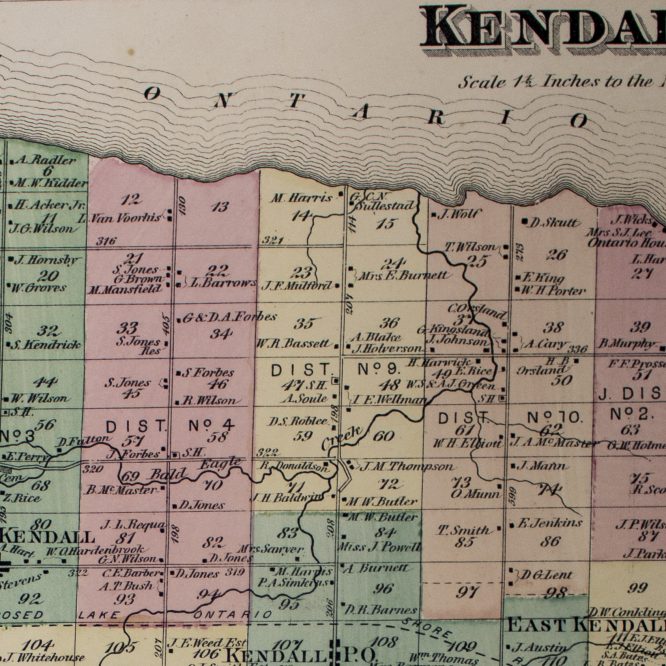Vol. 4, No. 46
The abundance of town, village, hamlet, road, and street names provides an opportunity to understand the past. Many of the towns and villages in Orleans County are named in honor of prominent men in the United States; Kendall, for example, is named in honor of U.S. Postmaster General Amos Kendall (an ardent supporter of President Andrew Jackson). Hamlets often serve as an indicator of local status or early settlement; Kuckville in honor of George Kuck, Hindsburg in honor of Jacob Hinds, or Knowlesville in honor of William Knowles. The origins of street and road names, on the other hand, are more elusive. In some simple cases, they indicate early settlement, in other cases they may indicate the past presence of an early service offered in the area, but on occasion the names seem rather silly and lacking in sensibility.
Beaver Alley in Albion is a clear oddity, but considering the possible origin of the name, perhaps it makes sense. Woodchuck Alley in Kendall is another example. Bill Lattin writes in v. 19, no. 2 of Bethinking of Old Orleans that “…we can assume [Woodchuck Alley] was simply named for the proliferation of those critters in that area.” The explanation seems logical, as tracing the name as far back as possible reveals that in the early 1950s the road was known locally as “Woodchuck Alley” but on the record as Backus Road. It appears as though the name originated with Charles Backus, a farmer who lived on the road.
A similar example in Barre, Johnny Cake Lane, has a story very similar to that of Woodchuck Alley. Bill Lattin wrote two possible explanations for the naming of the road; “One is that children attending Barre Dist. #14 School frequently took Johnny Cake in their lunch pails to school. The other legendary explanation is that at one time there was an advertising sign at one end of the road which promoted Johnny Cake Chewing Tobacco.” A 1913 atlas shows the road listed as “High Street,” even though newspapers show record of the Johnny Cake Lane name around the same time. It is interesting to see that in both of these cases, colloquial references to a particular street eventually took hold as the official name.
One particular story that demonstrates the rather simplistic nature of road naming references the old Norwegian settlement located in Kendall. Established in 1825 under the guidance of Cleng Peerson, with assistance from Andreas Stangeland, the first organized group of Norwegian immigrants settled an area of land near the shore of Lake Ontario. The early experiences of this group were discouraging at best, leading many families to abandon their little settlement and venture westward to the Fox River Valley in Illinois. All that remains of this very important landmark in organized Norwegian immigration to the United States is the Norway Road, running from Ridge Road north to the shore of Lake Ontario.


